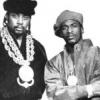MOI question - what length do you start with?
-
Who's Online 108 Members, 0 Anonymous, 1,083 Guests (See full list)
- hohjoe
- Byrnzee
- Okie4
- jbern
- Melqy
- ejgaudette
- James Lawhead
- Sweet56
- Rob17452
- Shlax
- arodrig29
- Bluegoose13
- MattWillGolf
- William P
- chippingwithchris
- GolfSpy_BEN
- Josh Parker
- jgreenie19
- StrokerAce
- tdc1
- golfcent
- Allen Lee
- Vegan_Golfer_PNW
- Preeway
- OG53
- EnderinAZ
- Javs
- azstu324
- Jerrymac
- porzy
- Dashuf
- Autoflexusa
- vamosjackets
- JohnSmalls
- High_Altitude_Golfer
- xOldBenKenobiX
- Jahcatano
- Track 1
- MN_Hacker
- NotQuite70s
- Thommo57
- GregGarner
- RCGolf
- steelerfan1974
- Neilski
- ZJeb67
- IndyBonzo
- cksurfdude
- JonMUSC08
- ZackS
- LucheySchoe
- revkev
- ChitownM2
- Breakpar
- knightsofnii
- TaylormadeHunter1
- RanMan
- TheHopSing
- DaveP043
- Grip
- GolfSpy MPR
- BobBC78
- Ruger
- Swood1994
- Strongeotwe
- EMacK1961
- funkyjudge
- dbdors
- Ball0
- TylorJudd
- Rondozase
- TCUfrog
- JRDuck40
- feocheo83
- skraeling
- Wakit300
- CoachGYGO
- Kinkel
- acatalano32
- Indy_Oz
- peterg2000
- JEFF1
- GolfSpy BOS
- Paul Dovishaw
- gingerbeast87
- Swaggy_H8
- Clemsonfan
- No3PuttLaLa
- Dmdecoy
- MILGolfing
- Sam C
- BriceT821
- Brooky03
- Gdog007
- Jmikecpa
- Jerry Fortenberry
- Vertical
- JKane
- hflang406
- taylorjonasher
- Golfer Phil
- greyhounds15
- RichL85
- Demac1
- Michael.Sandoval33
- Koncelor71
- mongo312
- Fjd


Recommended Posts
Archived
This topic is now archived and is closed to further replies.